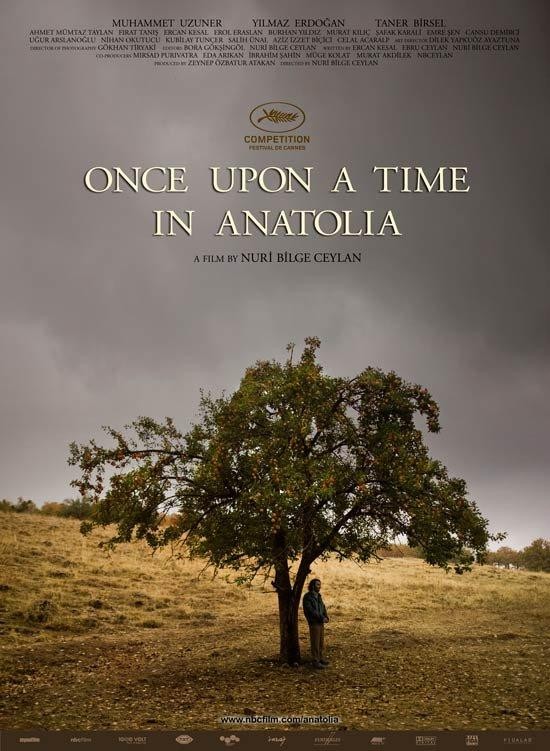 Turkish director Nuri Bilge Ceylan’s Once Upon a Time in Anatolia begins with what seems to be an impossible task — finding a buried body in the vast expanse of Anatolia, miles and miles of empty landscape near a town called Keskin, in the dark of night. Several cars filled with police officers, a prosecutor, a doctor and the brothers who already confessed to the murder drive through the darkness, converging on a series of desolate sites. The brothers try to remember where they buried the body, one claiming to have been asleep when the deed was done, and the other saying he was drunk and only remembers a fountain (of which there are dozens) and a “round” tree.
Turkish director Nuri Bilge Ceylan’s Once Upon a Time in Anatolia begins with what seems to be an impossible task — finding a buried body in the vast expanse of Anatolia, miles and miles of empty landscape near a town called Keskin, in the dark of night. Several cars filled with police officers, a prosecutor, a doctor and the brothers who already confessed to the murder drive through the darkness, converging on a series of desolate sites. The brothers try to remember where they buried the body, one claiming to have been asleep when the deed was done, and the other saying he was drunk and only remembers a fountain (of which there are dozens) and a “round” tree.
As the night wears on and the whole entourage stops at more and more wrong crime scenes, the character of each of the officials becomes more clear. The film is really less about the criminals and the crime than it is about the men in the cars, particularly the Police Commissioner, the Prosecutor and the Doctor. They discuss the mundane, at one point the merits of different kinds of yoghurt, and a central thread becomes one particularly mysterious case that the Prosecutor wants to run by the Doctor of a beautiful women who died on the day she predicted she would.  As the sun rises, and the body is found, several of the stories the men have discussed through the long night come into focus. (The less I tell you, the better.)
As the sun rises, and the body is found, several of the stories the men have discussed through the long night come into focus. (The less I tell you, the better.)
Once Upon a Time in Anatolia won the Grand Jury Prize for Best Film at Cannes in 2011, and opened here in the US earlier this year. I wouldn’t recommend it to Mainstream Chick. It is long (157 min.) and the last part of the film did drag a bit even for me, but ultimately I found it a very rewarding experience for some wonderful performances, the haunting cinematography, and the way the director/co-writer places the weight of the world on these very ordinary men’s shoulders. It is a beautiful meditation on the human condition.

